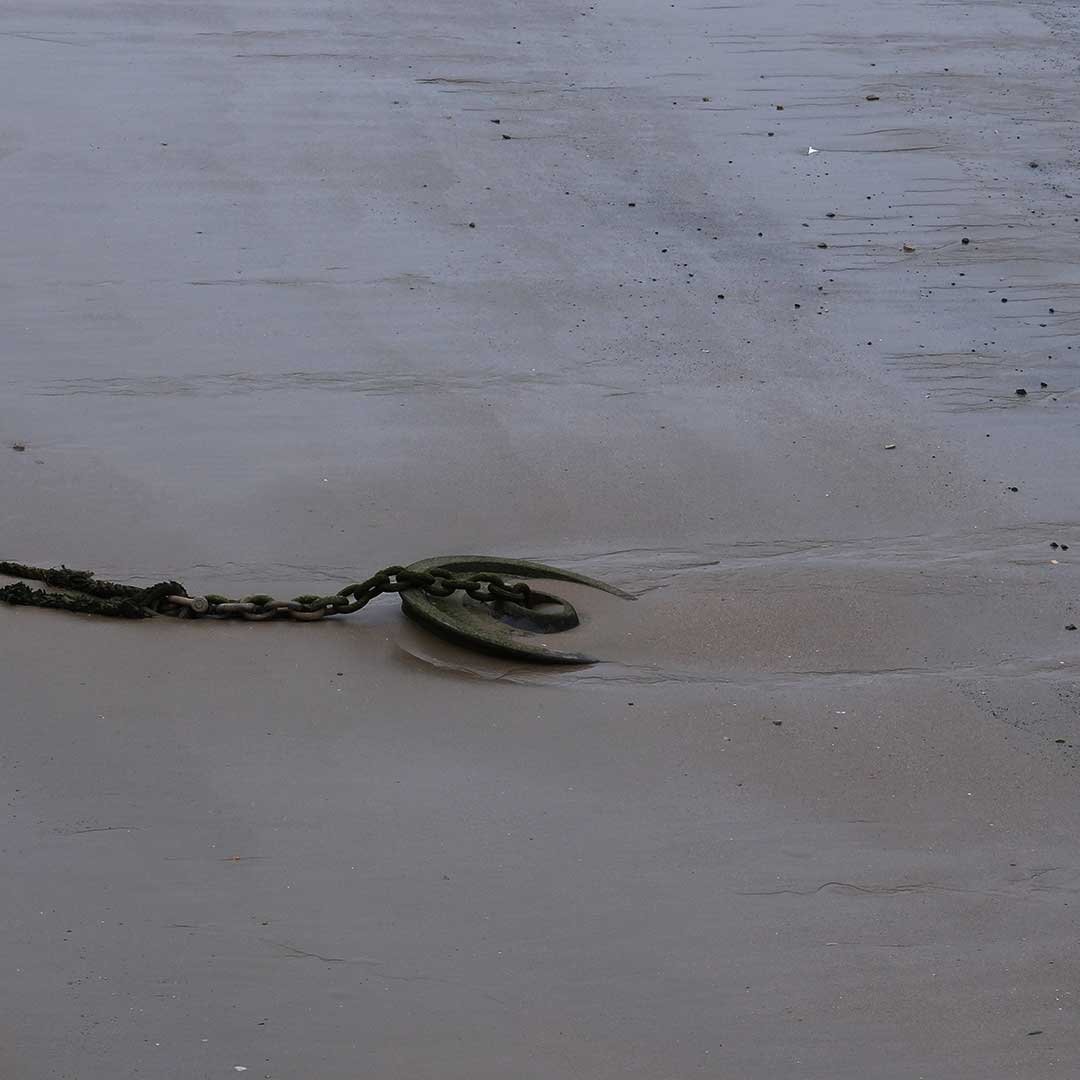dunes,
tidal halt
[14 January 1928, The Spectator]
Ir was the unexpectedness of the London floods. which gave a special poignancy to horror and dismay. It was as though a friend had suddenly turned into a homicidal maniac, for London River, as sailors call the Thames, is the maker of London and has always been its trusted servant. Four times in every twenty-four hours the tides rush through the heart of London, bringing or carrying away merchandise and cleansing places which would otherwise be stagnant, and the ebb conveys to the sea the inland flood waters which but for the Thames would make permanently sodden some of the richest of agricultural lands.



a barrier’s hum, sporadic clangor within the river’s drift, aggregates form,
a jagged wharf stands.
dunes,
tidal halt


a barrier’s hum, sporadic clangor within the river’s drift, aggregates form,
a jagged wharf stands.

Woolwitch ends…
…is severed, at the Thames tidal barrier. The Barrier stands resolute, a series of silver metal shells looking against any unwanted tide. Its gates, poised to rise in defense, is engineering negotiation with nature. Here, the river is not just water but a threat, shaped and restrained, yet ever persistent.
The Barrier’s mechanized hum and occasional clangs blend with the soft lapping of the tide against its base, creating a metallic symphony that resonates with the early morning light. Beyond, the water flows steadily, carrying whispers of the city’s pulse. Each movement of the tide is a breath, a rhythm that speaks to the cyclical dance of nature and industry.

Woolwitch ends…
The Barrier’s mechanized hum and occasional clangs blend with the soft lapping of the tide against its base, creating a metallic symphony that resonates with the early morning light. Beyond, the water flows steadily, carrying whispers of the city’s pulse. Each movement of the tide is a breath, a rhythm that speaks to the cyclical dance of nature and industry.

● dunes, tidal halt


Canary Wharf, which gleams with a deceptive permanence, towers over the Thames, its glass and steel facades reflecting the river’s depths. This financial fortress, a modern abstraction, aspires upwards while its foundations rest uneasily on the shifting platform of economic speculation. The soundscape shifts with the proximity of Canary Wharf, where the river’s edge bristles with the high-rise towers of commerce. Glass and steel gleam in the sunlight. The low hum of business, punctuated by the occasional drone of a helicopter or the distant wail of a siren, blends with the natural sounds of the river. The tide, ever-present and ever-changing, weaves these sounds together into a cohesive, incongruent, whole.
[14 January 1928, The Spectator]
Ir was the unexpectedness of the London floods. which gave a special poignancy to horror and dismay. It was as though a friend had suddenly turned into a homicidal maniac, for London River, as sailors call the Thames, is the maker of London and has always been its trusted servant. Four times in every twenty-four hours the tides rush through the heart of London, bringing or carrying away merchandise and cleansing places which would otherwise be stagnant, and the ebb conveys to the sea the inland flood waters which but for the Thames would make permanently sodden some of the richest of agricultural lands.
Canary Wharf, which gleams with a deceptive permanence, towers over the Thames, its glass and steel facades reflecting the river’s depths. This financial fortress, a modern abstraction, aspires upwards while its foundations rest uneasily on the shifting platform of economic speculation. The soundscape shifts with the proximity of Canary Wharf, where the river’s edge bristles with the high-rise towers of commerce. Glass and steel gleam in the sunlight. The low hum of business, punctuated by the occasional drone of a helicopter or the distant wail of a siren, blends with the natural sounds of the river. The tide, ever-present and ever-changing, weaves these sounds together into a cohesive, incongruent, whole.


